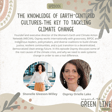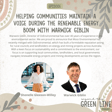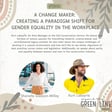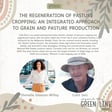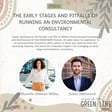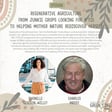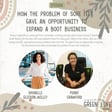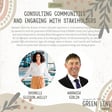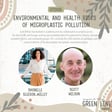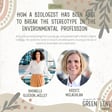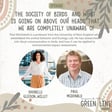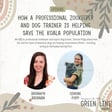
Challenges In the Remediation Of Complex Contaminated Sites And The Application Of New Technology For Emerging Contaminants
Today’s guest possesses a gift that we all can benefit from: he loves bringing clarity to complex problems. Ian Brookman is the General Manager for Strategy and Development in Environmental Services at Ventia. He describes himself as a translator between clients who have complex environmental problems and a broad industry of experts with potential solutions.
Ian was previously President of the Australasian Land and Groundwater Association and has a long-held passion for seeing communities and environments return to health.
A lifelong natural history enthusiast, Ian started his career as a geologist, studying environmental sciences while obtaining his degree in geology, and soon began working for a remediation research company. He gained experience drilling at petrol stations and other contaminated sites and began his journey into the world of contaminated land management and remediation.
Now at Ventia, his team works toward sustainability in the energy industry. They’re often brought into brownfield sites (areas where contamination is present from hydrocarbon spillages like petroleum, pesticides, asbestos, heavy metals such as lead, or the previous use of the site for defense training), using various technologies to remove contaminates and restore soil.
Their process starts with reviewing previous data from site investigators, ensuring there were no gaps during data collection. They then decide what technologies and treatments are best for each specific site’s soil or water: whether it’s a biological system that needs a thermal approach, or a site that requires a chemical solution.
Ian’s team often removes PFAS (Per- and Polyfluoroalkyl Substances), a manmade chemical used in fire-fighting that is nicknamed a “forever chemical.” Ventia developed a modified soil-washing approach to remove PFAS, and the cleaned soil can often be re-used back on the site.
Shonelle and Ian discuss Ventia’s joint venture with SUEZ, Earthsure: a soil processing facility that minimizes certain soils’ environmental impact. The technology at Earthsure can mobilize heavy metals in soils, do thermal treatments, and deal with a wide range of hazardous waste.
They can then easily add organic matter back into the soil, even deciding what type of soil the end product should be, based on what their clients find most useful.
Ventia recently won an award for a decade-long sediment remediation project at Kendall Bay where they were the first to use a particular technology at full scale.
Ian’s current projects include treating a former uranium mine, as well as several energy transition projects, like decommissioning coal mines and fracking sites. We know you’ll appreciate Ian’s knack for boiling down the complexities of remediation, and his drive for excellence in the field.
